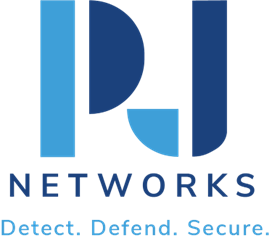Cybersecurity in the Era of Remote Work
Introduction
As the workforce has evolved drastically in recent years, remote work has become a pivotal element of many organizations. This change, amplified by global events like the COVID-19 pandemic, has presented new challenges in maintaining cybersecurity. With employees accessing sensitive data from potentially unsecured locations, organizations are finding that their cybersecurity strategies need to adapt quickly. In this blog post, we’ll explore the cybersecurity challenges emerging from the rise of remote work and how businesses can tackle them effectively.
Rise of Remote Work
The concept of remote work isn’t entirely new, but its prevalence has skyrocketed. Factors such as technological advancements, changing workforce demographics, and a global push towards work-life balance have contributed to many companies adopting flexible work arrangements. According to various surveys, a significant percentage of businesses now offer remote work options, with some even declaring a permanent shift. However, this transition has introduced the pressing need for robust remote work security protocols.
New Cyber Threats
As organizations expanded remote working options, so too did the landscape of cyber threats. These threats include:
- Phishing Attacks: Malicious actors have tailored phishing campaigns to exploit households’ multiple devices, misleading emails, and weak home network setups.
- Ransomware Attacks: With employees often using devices without enterprise-grade security, ransomware attacks have found more vectors to infiltrate systems.
- Data Breaches: The dispersal of sensitive data across various locations can increase the risk of breaches if not properly secured.
- Weak Password Security: Employees might use simple passwords or reuse them across different services, making unauthorized access easier.
- Unsecured VPN Usage: While VPNs are a crucial protective measure, improper usage by untrained employees can lead to vulnerabilities.
These threats highlight the necessity for businesses to prioritize securing remote employees and ensuring comprehensive cybersecurity measures are in place.
Securing Remote Workforces
Securing remote employees requires a multifaceted approach that combines policy formulation, technology implementation, and continuous vigilance.
- Develop Robust Cybersecurity Policies: Organizations need to establish comprehensive cybersecurity policies that extend beyond the office. Policies should cover remote access protocols, device usage guidelines, and data protection measures tailored for remote work environments.
- Implement Secure Network Solutions: Establish secure networks for remote work through the use of Virtual Private Networks (VPNs) and firewalls, ensuring that all employees have private and encrypted internet access.
- Regularly Update Systems and Software: Frequent software updates and patching are critical in mitigating new vulnerabilities that malicious actors could exploit.
By adopting a proactive stance in securing remote workforces, organizations can minimize the risk associated with work from home threats.
Tools and Technologies
To effectively secure remote work environments, incorporating specialized tools and technologies can provide a fortified line of defense.
- Endpoint Protection: Advanced endpoint security solutions should be employed to monitor and protect devices from potential threats autonomously.
- Zero Trust Architecture: Implement the zero trust model which operates on the principle of verifying each request as though it originates from an open network.
- Secure Communication Tools: Use encrypted communication platforms for secure file sharing and interaction among remote teams.
- Cloud Security Solutions: With the shift to cloud-based platforms, investing in secure cloud solutions that include robust encryption and data loss prevention features is essential.
Adopting these tools and technologies can significantly enhance the security of your remote workforce, ensuring they’re protected from emerging cyber threats.
Employee Training and Awareness
Even the most sophisticated cybersecurity systems can falter if employees are not adequately trained. Human error remains a leading cause of data breaches, making employee training a cornerstone of cybersecurity strategies.
- Regular Security Training Sessions: Conduct routine training sessions to inform employees of the latest security best practices and potential threats.
- Simulated Phishing Exercises: Regularly test employees with simulated phishing attacks to bolster alertness and resilience against genuine threats.
- Clear Reporting Mechanisms: Establish and communicate clear protocols for reporting suspicious activities or potential threats without fear of repercussion.
By cultivating a culture of security awareness, organizations empower their workforce to become the first line of defense against cyber threats.
Conclusion
The era of remote work is here to stay, bringing with it both opportunities and challenges. For businesses, this shift necessitates a comprehensive reevaluation of cybersecurity measures to safeguard sensitive data and maintain privacy. By understanding the new threats, implementing advanced security technologies, and investing in training and awareness, organizations can effectively enhance remote work security and build a resilient workforce poised to excel in this new landscape. As we embrace the future of work, proactive cybersecurity will be the key to unlocking its full potential, enabling businesses to thrive in an increasingly digital world.
